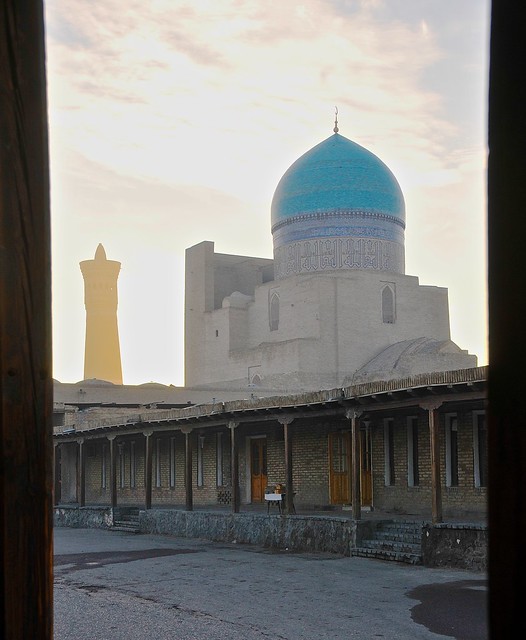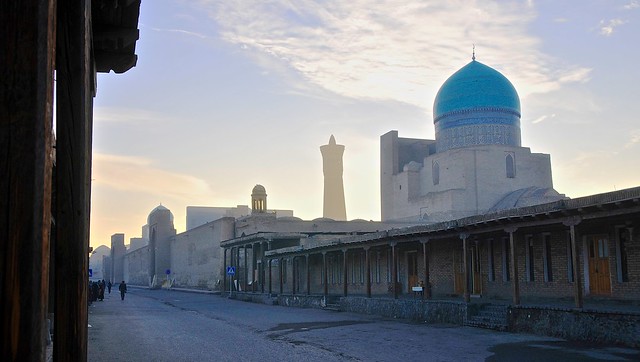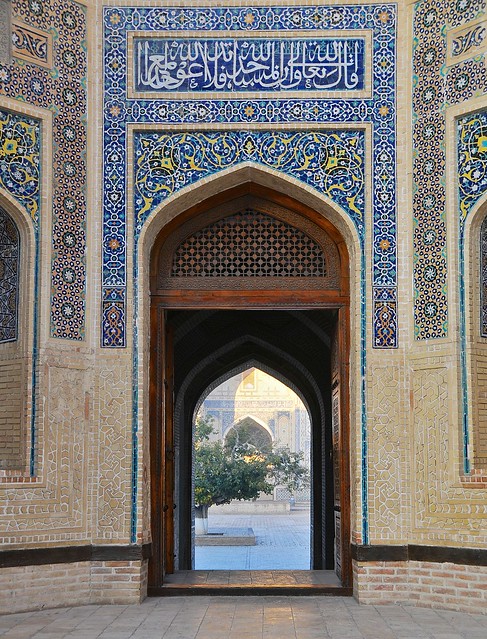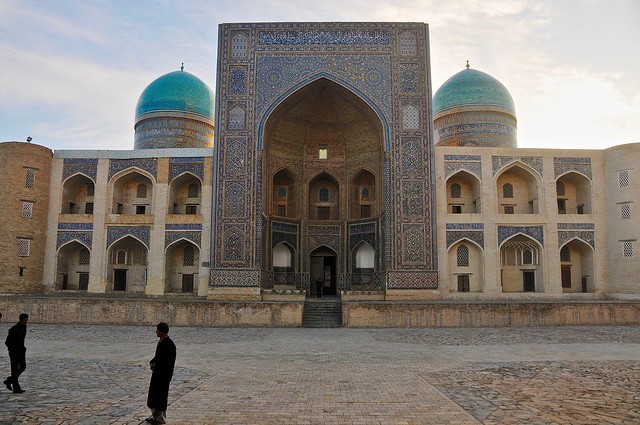The overnight train to
Bukhara arrives at about 6:30 in the morning, and since it had left Samarkand at around 1:30, I hadn't been able to get too much sleep. But it's nice to be forced to get up that early in the morning, as it really lets you see the city before people and tourists are up and about.
The Bukhara train station really isn't in Bukhara but in the neighbouring town of Kogon, and is about 15km from the center of Bukhara. But they have regular marshrutkas/buses that run from the station, and if you just follow all the locals leaving the train you'll find them in a lot in front of the station pretty easily. The buses (or at least the one I was on) don't go into the center of historical Bukhara, but skirt the old town, eventually passing by the Ark on their way to the main market west of the Ark. Apparently there are some marshrutkas that go directly to the Lyabi Hauz area, however.
Before you leave the train station area, however, I suggest you take a couple of minutes to check out the nearby
Kogon Palace, apparently built for Tsar Nicholas II, who never arrived to see it. It just in front of the train station, across from the parking lot where the buses and marshrutkas leave from, but it's tucked a bit behind a park so you might not see it immediately.
 |
| Sunrise from the adjacent to the walls of the Ark, shortly after getting off the bus. The Ark was closed for restoration while I was there, and most of the walls that you can see have been pretty heavily restored already. |
 |
| The Kalon minaret behind the Kalon mosque, itself behind a row of shops. |
 |
| View down the street that runs from the Kalon ensemble to the Ark. To me, Bukhara is immediately more likeable since the old city really feels old, worn, and lived in. Nothing feels glossy or new, and it has much less of a touristy vibe for some reason. I suspect the largely monochrome look of many of the monuments, and the way the blend in with residential buildings and shops, helps contribute to this. |
 |
| The courtyard between the Kalon mosque complex and the (still functional, non-tourist) Mir-i-Arab madressa in the middle of the picture contains Bukhara's emblemaic Kalon minaret. Yet the shops around it are remarkably low key. |
 |
| The eastern entrance to the Kalon mosque complex. |
 |
| View from the iwan towards the Mir-i-Arab madressa, with a couple of early-rising locals up and about. Tourists aren't allowed to enter the working madressa. |
 |
| View from inside the Mir-i-Arab madressa in 1890, courtesy French photographer Paul Nadar. |






